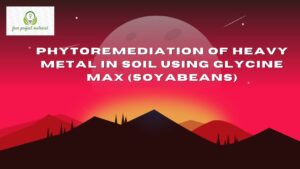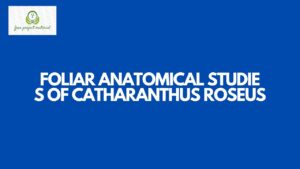ABSTRACT
Yoghurt a food product derived from milk has been established as one of nature’s most complete food due to their available nutrient as a result of this nutrient many microorganisms has been attracted to it. The evaluation of locally produced yoghurt within Ikot Ekpene metropolis using standard methods revealed the presence of Proteus sp with 63.8% and Micrococcus sp with 1.4% while the fungi isolate where Saccharomyces 90% and Penicillium 10%, the heterotrophic bacterial count reveals that sample C has the highest colonies 6.0×103 cfu/ml while sample E had 1.0×103 cfu/ml, fungal count reveal that there was no growth in sample E while sample C had 2.0×103 cfu/ml. The antibiotic susceptibility profile shows that all Gram-positive isolates were sensitive to all the antibiotic while the gram negative Klebsiella spp was resistance to augmentin and pefloxacin. This analysis shows that some locally produced yoghurt can serve as a source of transmission of pathogenic bacteria to humans which may cause a serious health hazard.
TABLE OF CONTENTS
Title Page – – – – – – – – – i
Declaration – – – – – – – – – ii
Certification – – – – – – – – – iii
Dedication – – – – – – – – – iv
Acknowledgement – – – – – – – – v
Abstract – – – – – – – – – vi
Table of Contents – – – – – – – – vii
CHAPTER ONE
1.0 INTRODUCTION– – – – – – – 1
1.1 Background of the Study – – – – – – 1
1.2 Aim and Objectives of the Study – – – – 3
1.3 Scope and Limitation of the Study – – – – 3
CHAPTER TWO
2.0 LITERATURE REVIEW – – – – – – 4
2.1 History of Yoghurt – – – – – – 4
2.2 Production of Yoghurt – – – – – – 8
2.3 Types of Yoghurt – – – – – – – 8
2.4 Uses of Yoghurt – – – – – – – 9
2.5 Nutritional Value of Yoghurt – – – – – 10
2.6 Health Benefit of Yoghurt – – – – – 11
2.7 Storage Methods of Yoghurt – – – – – 12
2.8 Microbial Spoilage of Yoghurt – – – – – 14
2.9 Sources of Microbial Contamination of Yoghurt – – 15
2.9.1 Contamination Depending on Weather – – – 15
2.9.2 Contamination due to Handling – – – – – 17
2.9.3 Contamination by Adulterants – – – – – 20
2.10 Signs of Contaminated Yoghurt- – – – – 21
CHAPTER THREE
3.0 MATERIALS AND METHODS– – – – – 24
3.1 Sample Collection – – – – – – – 24
3.2 Sterilization of Glasswares – – – – – 24
3.3 Bacteriological Analysis of Sample – – – – 25
3.3.1 Serial Dilution of the Samples – – – – – 25
3.3.2 Cultivation of Bacterial Isolates – – – – – 25
3.3.3 Enumeration of Bacteria Isolates – – – – 25
3.3.4 Purification of Bacterial Isolates – – – – 26
3.3.5 Characterization and Identification of Bacterial Isolates – 26
CHAPTER FOUR
4.0 RESULTS AND DISCUSSION– – – – – 27
4.1 Results – – – – – – – – 27
4.2 Discussion – – – – – – – – 37
CHAPTER FIVE
5.0 CONCLUSION AND RECOMMENDATIONS– – – 42
5.1 Conclusion – – – – – – – – 42
5.2 Recommendations – – – – – – – 43
References
Appendix
CHAPTER ONE
1.0 INTRODUCTION
1.1 Background of the Study
Food is an essential ingredient to sustain life which can be obtained from plant and animal. Milk is one of such foods which can be obtained from an animal source and it has been established as nature’s most complete food due to its endowed nutrients (protein, carbohydrate, minerals, vitamin) (Everette and McLeod, 2005).
Yoghurt is a fermented, often flavoured semisolid food made from milk. Its production involves the fermentation of the lactose content in milk giving rise to lactic acid, acetic acid, CO2, acetaldehyde, diacetyl etc. through the use of starter culture which contains Streptococcus thermophilus and Lactobacillus bulgaricus (Ifeanyi et al., 2013). According to report, yoghurt has almost the same nutritional value as the basic milk product (Ruud and Bert, 2004).
The consumption and demand for yoghurt have increased worldwide. In Nigeria for example, yoghurt consumption has been on the increase during the last decade largely by residents of both urban cities and rural areas. This increase has led to the establishment of small scale factories solely for the production of yoghurt in many cities (Nwamaka and Chike, 2010).
There are different brands of yoghurt produced industrially in Nigeria and Lagos State is one of its major market place where it is commonly hawked in the streets (Olugbuyiro, 2011).
There are reported cases of food infection and intoxication largely due to poor hygiene in the production, processing and storage of such foods. However, some microorganisms such as Staphylococcus aureus, Escherichia coli, Coliform bacteria and Fungi have been well documented as yoghurt borne infection. These microorganisms produce enterotoxins which have been associated with food poisoning (Uzeh 2006).
Due to the health implication of poorly produced yoghurt and other dairy products, this study was designed to assess the microbiological quality of locally produced yoghurt sold on the streets of Akwa Ibom State, Nigeria.
1.2 Aim and Objectives of the Study
The aim of this study is to carry out the microbiological and antibiogram evaluation of locally produced yoghurt and the objectives are:
- To determine the microbiological quality and load of locally produced yoghurts.
- To determine the susceptibility pattern of the isolates to some antibiograms using antibiogram.
- To give useful recommendation on the preparation and storage of locally produced yoghurt.
1.3 Scope and Limitation of the Study
The scope of this study covers the bacterial and fungal analysis of yoghurt and the antibiogram of the isolates, the work will be limited by time factor and financial constrain.

